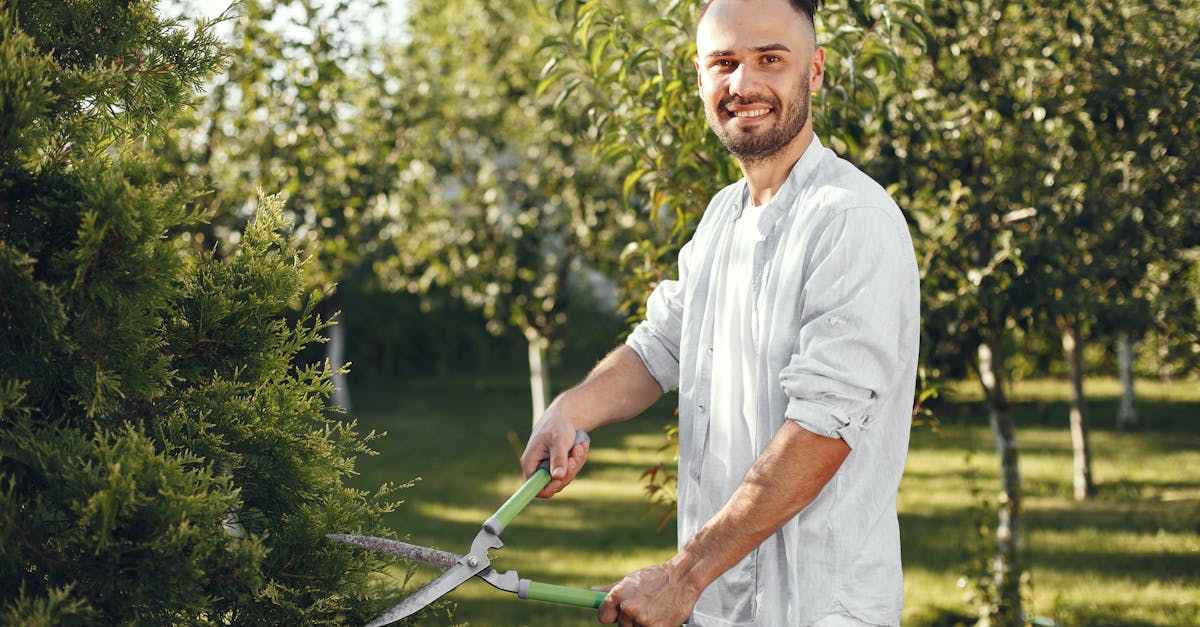
Bracing Techniques for Trees
Bracing techniques are essential for supporting trees that display structural weaknesses. These methods help mitigate the risk of limb failure caused by wind, heavy snow, or decay. With a variety of materials available, the choice often depends on the specific needs of the tree and the environment in which it grows. Rigid bracing systems, for example, provide solid support for weakened branches, while flexible systems allow for natural movement, reducing stress on the tree.
Tree Cabling and Bracing techniques are designed to enhance the stability of trees without compromising their health. Different approaches can be applied, such as installing cables or rods to bind branches together. The goal is to prevent further damage and ensure a balanced growth pattern. Proper installation and regular maintenance of these systems can prolong the life of a tree, making them a valuable solution for both residential and commercial landscapes.
Common Bracing Methods and Their Applications
Various bracing methods serve specific purposes when it comes to tree support. One common technique involves the use of steel rods or cables, which are installed to reduce the risk of failure in trees with weak or split trunks. These materials provide stability and can help redistribute weight more evenly across the structure of the tree. Another method is the use of wooden braces, which offer a more natural appearance. These are typically employed in younger trees or those that require less invasive support.
Tree Cabling and Bracing can also employ a system of tensioned wires or straps. This approach is particularly beneficial for trees with multiple leaders or branches that may be bending under the weight of foliage or fruit. It can help guide and maintain the tree's shape as it matures. Each method has unique applications suited to different tree species and conditions, often determined by the tree's age, size, and specific structural challenges.
When to Consider Tree Cabling and Bracing
Tree cabling and bracing is often necessary when a tree exhibits structural weaknesses that can lead to failure. This can occur in trees with heavy canopies or those that have grown asymmetrically due to wind exposure or obstacles nearby. Additionally, trees with multiple trunks or those that have suffered from disease may need support to prevent splitting or toppling over.
Monitoring your trees for signs of stress is essential in determining when to use tree cabling and bracing. If you notice significant leaning, cracks in the trunk, or numerous crossing branches, these indications signal that support is required. Early intervention can help maintain the health of the tree while minimizing risks to surrounding property and people.
Signs That Your Tree Needs Support
Certain visual cues can indicate that a tree may need support through Tree Cabling and Bracing. Look for signs of structural instability such as a significant lean, especially if it appears to be worsening over time. Cracks in the trunk or large branches, as well as broken limbs, can also signal potential issues that might necessitate additional support.
Additionally, the presence of extensive foliage on one side of the tree may suggest imbalances that could lead to damage during storms or high winds. If a tree has developed major root problems or has visible decay, it may require Tree Cabling and Bracing to ensure its stability and health. Monitoring these signs early can help prevent further complications and preserve the tree's integrity.
Professional vs. DIY Tree Cabling
When it comes to Tree Cabling and Bracing, many homeowners face the decision of whether to hire a professional or to attempt a DIY approach. Professionals bring extensive knowledge and experience to the table, often using specialized equipment for installations. Their expertise can help ensure that the cabling and bracing systems are applied correctly, minimizing potential risks to both the tree and surrounding structures.
On the other hand, some individuals may choose to tackle Tree Cabling and Bracing themselves. This choice can save money upfront and provide a sense of satisfaction in managing the task independently. However, without the proper training, the risk of improperly securing the tree increases, which may lead to further damage or even tree loss. Weighing these options is essential for making an informed decision about tree maintenance.
Weighing the Pros and Cons of Each Approach
When considering tree cabling and bracing, the choice between professional services and a DIY approach is critical. Hiring a certified arborist ensures that the work is conducted with expertise. Professionals can assess the specific needs of a tree more accurately, potentially leading to better long-term outcomes. Their knowledge of local regulations and safety protocols can be invaluable, especially for larger trees or complex situations.
On the other hand, DIY tree cabling and bracing can be cost-effective. Homeowners who are familiar with tree care may find that they can manage simple installations themselves. Using readily available materials can reduce expenses significantly. However, without proper knowledge, there is a risk of improper installation that could harm the tree or compromise its structural integrity over time. Thus, weighing the pros and cons of each approach is essential for making the right decision regarding tree cabling and bracing.
FAQS
What is tree cabling and bracing?
Tree cabling and bracing are techniques used to provide support to trees that are at risk of structural failure due to factors like weak branches, heavy foliage, or environmental stress. This process involves installing cables or braces to improve stability and prevent damage during storms or high winds.
When should I consider tree cabling and bracing for my tree?
You should consider tree cabling and bracing if you notice signs of structural weakness, such as leaning, split branches, or a history of storm damage. It’s also advisable if a tree is at risk of falling or if it poses a safety hazard to nearby structures or people.
What are some common methods of bracing trees?
Common methods of bracing trees include using rods, cables, and braces. These can be installed in various configurations depending on the specific needs of the tree, such as tensioning cables to stabilize weak limbs or using rods to reinforce splits in the trunk.
Can I perform tree cabling and bracing myself, or should I hire a professional?
While DIY tree cabling and bracing is possible for those with experience, it's often recommended to hire a professional arborist. They have the expertise to assess the tree's condition accurately and to install support systems safely and effectively.
What are the pros and cons of professional vs. DIY tree cabling?
The pros of hiring a professional include expert assessment, safe installation, and the use of appropriate materials. However, it can be more expensive. DIY methods may save money but carry risks if not done correctly, and might not provide the same level of support or safety.
